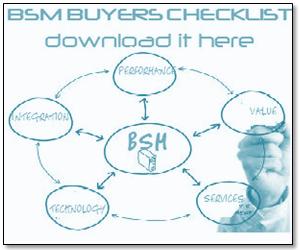Standard Tool to Define, Input & Report, but “No More, One Size Fits all Meaningless Data!”
As the Cloud and as-a-service consume the airwaves, trade rags and vendor messaging, one thing is becoming more and more relevant – IT Aligning to the Business, Measuring how the business consumes services and Communicating in terms of services and business metrics. Flexibility to measure and communicate the way business uses technology and agility to customize measurements and communication are key and will become more complex in a mixed physical, virtual and cloud computing environment. Developing the proper management, measurement and communication today will enable embracing cloud delivered services without an interruption in service communication. IT organizations that implement proper management, measurement and communication in terms of services will be those that drive value into their businesses.
Read how a Novell Business Service Management customer has long since conquered this dilemma and continues to deliver technology as business services in the advent of new delivery models and technology.
The Set-up . . . . .
A large financial institution headquarted in Europe was experiencing the shift from measuring technology to communicating services in terms of business objectives and KPIs. The business, in fact said, “no more, one-size-fits-all meaningless data”, we need to understand services in terms of KPIs to the overall business as they differ across regions and divisions. A few key metrics:
* One of the largest, global banking networks headquartered in Europe, strong positions in Asia and significant presence in the US
* Operates in >80 countries
* >100,000 employees with >70% in Europe
* Net banking income >18M Euros
* Business required a flexible list of services and service level agreements aligned to business objectives
* Services may be common – used differently by region & division – varying levels of priority by region & division
* Regional managers wanted a standard tool to define SLAs & OLAs from historical KPIs
* Applications were similar, but different across regions
* Need consistent, common and timely communication across the institution
The Solution . . . . .
We need to know how services are performing from a technology standpoint, how the technology is impacting the business in processing value/volume of transactions and we need to define priority of services driving how the supporting technology is managed. We have plenty of monitoring, but we need to measure and communicate in business terms and with flexibility to change and define by region and division.
This requires several things:
* List of Services – Service Catalog
* Definition of key metrics to the services
* Intelligent service models to reconcile and correlate disparate data sources
* Implementation of measurements in terms of KPIs and flexibility by region
* Flexibility to modify measurements without coding/development
* Common vehicle to communicate services by region and roll up to the institution
* Leverage current investments in management technology to gather data
* Historical views of trends by which to adjust SLAs and management priorities
This was and is a mature organization in that they had the management of technology in place, understood their services and metrics, but did not have the single, automated view for communication and ultimately to adjust services in order to drive value into the business. Complex infrastructures require integration of data, correlation of that data and presentation in real-time in order to manage operationally, but to also communicate and manage from the business view point.
This is where Novell’s Business Service Management came in to integrate, build the intelligent service models, automate the correlation of disparate data sources, prioritized events and delivered flexible business service dashboards where the regions and business units could define and alter their SLAs and OLAs managing the technology. Flexibility to adjust was accomplished, while communicating service delivery across the organization up to the institution level in a consistent and timely manner.
The Benefits . . . . .
* Centralized, common tool for management and communication
* Flexibility to define by region & division
* Rapidly deliver SLA contract via web based dashboards and enable modification to the metrics based upon market and business conditions
* Users see and drive the services versus IT and technology driving services and communication
* “No more, one size fits all meaningless data”
* One of top 10 global banking brands – technology delivers value powering the business
This is not an uncommon story as it relates to the implementation of Service Level Agreements, measurement and communication to the business. When IT reaches the ability to turn meaningless, technology data metrics into information that can be communicated and consumed as business services, is when IT is delivering value to the business and powering the business for competitive advantage to lead it’s industry.
Now the interesting metric – this was > 5 years ago prior to the added complexity of virtualization, cloud computing and Intelligent Workload Management. The Novell Business Service Management solution is technology and architecture agnostic, meaning that the service still powers the business. The Intelligent Service Model is still the power with the addition of more meaningless data when viewed on it’s own regarding new management technology and/or infrastructure metrics.














